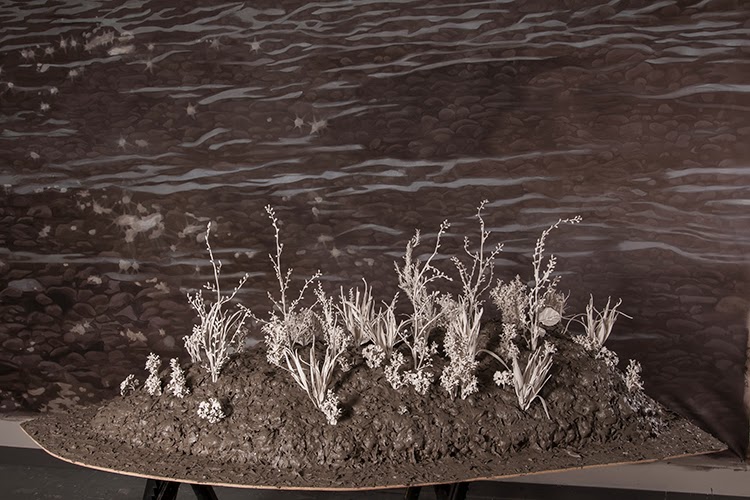An edit of a reprint of an article I originally wrote for a record label that relates to the special qualities of objects, and feeds into what we're doing in class...
By
Gala BentWednesday, May 27th, 2009
(Cathedral of Our Lady of the Angels, Los Angeles, California
Statue of Our Lady of Guadalupe, detail: the only relic from the “Tilma” in the United States: image public domain)
As a hoodoo-voodoo, get-you-back-to-me tool,
this hank’s thankless task is vast…
(From “A Lock of Her Hair” by Robert Wrigley)
Can an inanimate object hold power beyond its own basic material? Reliquaries that hold the bones or clothing of martyrs are kept because of the humble objects’ passionate history as part of or closely related to the bodies of saints. The work of
Dario Robleto is compelling because it feeds into the same reverence. In one of Robleto’s pieces, for example (
At War With The Entropy Of Nature/Ghosts Don’t Always Want To Come Back, 2002, shown below), which looks like an aged audio cassette encrusted with rusty porcelain, he lists the materials like this:
Cassette: carved bone & bone dust from every bone in the body, trinitite (glass produced during the first atomic test explosion at Trinity test site circa 1945, when heat from blast melted surrounding sand), metal screws, rust, letraset; audio tape: an original composition of military drum marches, weapon fire, and soldiers’ voices from battlefields of various wars made from Electronic Voice Phenomena recordings (voices and sounds of the dead or past, detected through magnetic audio tape).

The appearance of the object would not lend itself to the knowledge of its poetic ingredients, but once we know what it contains, we are easily entranced by Robleto’s commitment to the details of significance. Bone dust from every bone in the body? Voices from battlefields? Surely these meaningful choices vibrate through the object and charge it with unusual mojo. In any case, they capture our imaginations, much as the collections of celebrity-touched objects do (
Beatles bedsheets?). As a 14-year-old at a Cure concert, a drop of Robert Smith’s sweat fell on my face (I swore), and it buzzed with the power of teenage devotion.
A rare breed of devotees
eat the actual pages of sacred texts, in the eventual crossover of desire for proximity; touching an important object is one thing– but what if I can consume it entirely? Will it not then even become part of my body? A part of
me? Dali is said to have swallowed a strand of his lover’s hair when he found out about DNA; in effect, he now had all of her inside of him. Thomas Kinkaide signs the most expensive prints in his idiosyncratic hierarchy of value by including a DNA signature; read: pieces of the man’s body. How much more authentic can you get?
But there are many, many people who count this all as foolishness. A thing is just a thing, after all, and aside from the oral history assigned to these relics, the material has no special power. This is what struck me when I saw recent photos from
Laura Mackin, who makes much of her work with found images from the internet.
Laura Mackin:
64 Black Heads, 2009, digital image, dimensions variable (image courtesy of
Half/Dozen Gallery, Portland, OR)
The image above is collected from women who are selling their wedding dresses online. The blacked out faces are pragmatic– the identity of the bride is concealed in an effort to remain anonymous, so that the dress stands alone. But the effect is both eerily sad and unexpectedly funny. The identity of the bride is clearly the intent of the original photograph. The face cover-up plays against our sense of specialness, asking us to ignore the fact that these dresses were used ceremonially, with, probably, a great deal of hope and earnestness. And this has everything to do with the bodies and personalities housed inside the lace and bead-work. Their vibrancy still leaks around the corners of the clumsy black ovals and bars.
*






















.jpg)


























